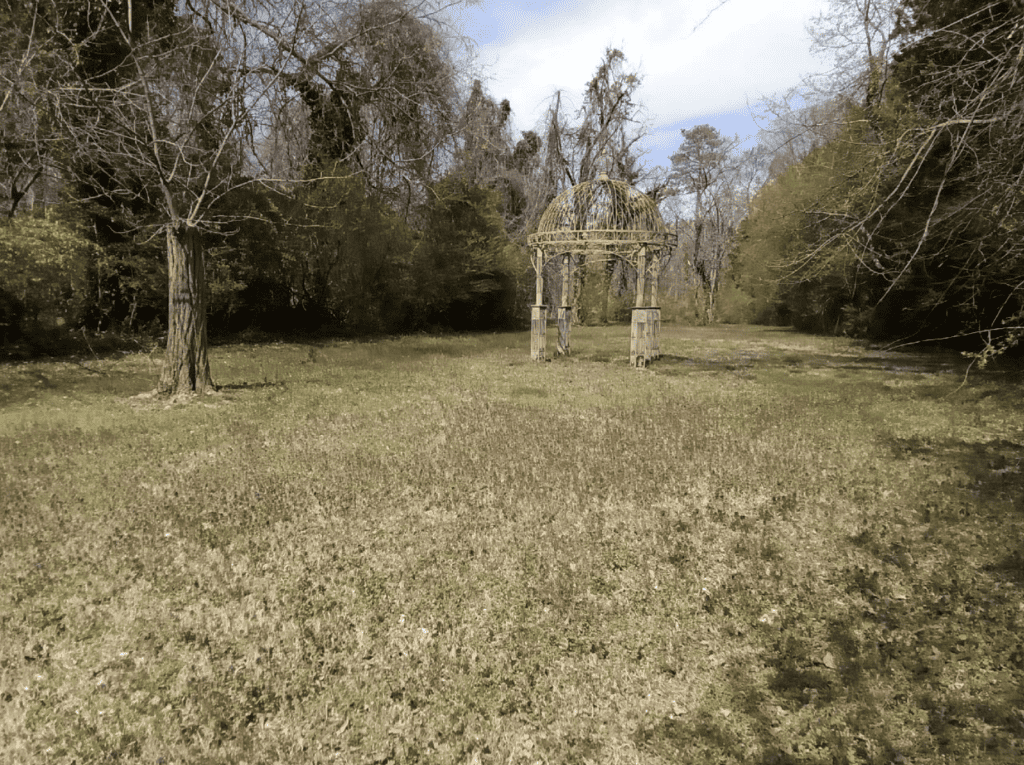Bon Air, VA – In the late 19th– and early 20th-centuries, planners and developers became increasingly interested in natural areas as places to escape the city center. Before places like Forest Hill (1889) and Ginter Park (1895) were developed as neighborhoods on the outskirts of Richmond, Bon Air was established in 1877 as a nearby resort community. Easily accessible from downtown via the Richmond and Danville Railroad, the Bon Air Hotel offered accommodations as well as bridle paths and bicycling trails while families built summer cottages on lots sold by the Bon Air Land and Improvement Company. By the 1910s, however, the Bon Air community had mostly transitioned from a vacation destination to a commuter village due to the advent of the automobile and improved train service.
More than a century after being established, Bon Air retains much of its original historic character. In 1988, it became the first community in Chesterfield County designated as a national historic district and listed in the Virginia Landmarks Register and National Register of Historic Places. The Chesterfield County Board of Supervisors adopted the Bon Air Special Area Plan in 2015 and encouraged owners to seek county historic landmark designation to protect the architectural and physical integrity of the historic district. The Virginia Department of Conservation and Recreation’s (DCR) ConserveVirginia v3.0 includes the district in its Cultural and Historic Preservation Category thus ranking it in the top 10% of places to protect statewide.
One of the 45 structures that comprise the historic district is now permanently protected. The Capital Region Land Conservancy has recorded a conservation easement protecting 5.26 acres in the Bon Air Historic District as well as the residence known as “Huntly” that was built by James Waddell Gordon (1869-1952) in 1917.
 The conservation easement ensures that the house and original summer cottage on the property are not willfully demolished or the original structure and exterior altered in a manner inconsistent with the restrictions. No structures can be built within 250 feet of Burroughs Street and Ben Nevis Drive thus preserving tree canopy and the public view of open space (another goal of the Bon Air Special Area Plan). The protections also prohibit further subdivision and residential development of the property, which is one of the last large undivided properties in Bon Air.
The conservation easement ensures that the house and original summer cottage on the property are not willfully demolished or the original structure and exterior altered in a manner inconsistent with the restrictions. No structures can be built within 250 feet of Burroughs Street and Ben Nevis Drive thus preserving tree canopy and the public view of open space (another goal of the Bon Air Special Area Plan). The protections also prohibit further subdivision and residential development of the property, which is one of the last large undivided properties in Bon Air.
“We love how this house and its land reflect and sustain the original vision of Bon Air as a verdant refuge. We are happy to know that CRLC will safeguard its preservation so future generations will be able to enjoy and benefit from the ‘country in the city’ environment,” said the owners reflecting on 25 years since having purchased the home.
Located at a headwater of Powhite Creek, a tributary of the James River, the property also helps to protect water quality and drinking water in this important watershed, according to DCR’s ConservationVision watershed impact model. These public benefits will contribute overall to water quality goals outlines in the Chesapeake Bay Program’s 2000 Agreement and Virginia Water Quality Improvement Act of 1997.
# # #
About Capital Region Land Conservancy (CRLC): Incorporated in March 2005 as a non-profit 501(c)(3) organization, CRLC seeks to conserve and protect the natural and historic land and water resources of Virginia’s Capital Region for the benefit of current and future generations. Visit www.capitalregionland.org to learn more about CRLC’s land conservation programs.
For more information, contact Parker C. Agelasto, CRLC Executive Director at parker@capitalregionland.org or 202-302-0153.


